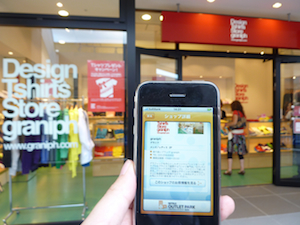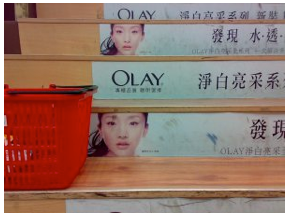 In a recent post I highlighted a number of critical impacts that technology is having, or will have, on the world of consumer goods marketing. Whilst many marketing teams are focusing on new media options offered by social networks, I’ve noticed a significant trend in shopping behavior that has a critical impact on the ways our brands are marketed in store.
In a recent post I highlighted a number of critical impacts that technology is having, or will have, on the world of consumer goods marketing. Whilst many marketing teams are focusing on new media options offered by social networks, I’ve noticed a significant trend in shopping behavior that has a critical impact on the ways our brands are marketed in store.
Digital engagement is fragmenting shoppers, and that has massive implications for in-store marketing.
Different experiences out of the store, create different shoppers inside the store
When I read research reports too often they refer to ‘the shopper’ or ‘shoppers’ as though they are one homogeneous group. Shoppers are not all the same. We all know that. And the impact of digital is that shoppers are becoming less homogeneous over time. There was a time that the assumption that most shoppers had broadly similar experiences of the category may have had some validity: for many brands all media was mass, so most shoppers would have experienced similar doses of brand indoctrination. In today’s fragmented and personalized media world, this is patently not true. Different groups of shoppers may have had radically different brand or category experiences. Some may barely know the brand beyond spying it on a billboard: others may have immersed themselves thoroughly in the brand experience through social media and other sites. By traditional marketing measures they may both be aware, and understand what the brand is about, but have yet to try the brand. But in reality as shoppers, entering a store, they are completely different.
And these different shoppers, of course, require a different in-store marketing mix. The old idea of ‘one size fits all’ is simply not good enough. For some shoppers merely having the product available is enough: for others they still need loads and loads of information: some have a distant relationship with the brand and are satisfied with that: others have experienced something far more immersive outside of the store and are expecting this to continue the experience inside the store. This is sometimes difficult for bricks and mortar stores, and therein lies their challenge and the opportunity. How to create a meaningful shopper experience in the age of the heterogeneous shopper?
Creating the optimum in-store mix in the age of the digital shopper
You can’t satisfy everyone
Segmentation and targeting go hand in hand. As shoppers fragment, the possibility of keeping them all happy recedes, and the need to target increases. An absolute focus on which shoppers are most important to brand success is critical. Create an in-store marketing mix which encourages target shoppers to do what we want them to do, ideally in a way which doesn’t frustrate non-target shoppers too much.
Beware of generic ‘truths’
Whilst 84% of smartphone shoppers use their phone whilst shopping, that doesn’t mean this is true for your target shoppers. What if your target shoppers are the other 16%, or don’t have smartphones. If 85% of shoppers in your category are female, that’s great: but what is 60% of your target shoppers are male?
Use technology
Use technology not for technology’s sake, but because it can create flexibility. A digital interface can rapidly create a different environment for different shoppers, depending on what they require. Additional information can be provided for those that need it, and it can be phrased in a way to be meaningful for different shopper segments. A word of warning, however. Despite the digital hype there are lots of shoppers who aren’t comfortable with technology, and don’t want it. Check your target shoppers’ digital habits, not just those of shoppers in general.
Use people
People are incredibly flexible, and yet too often staff in-store aren’t ‘programmed’ to make the most of this. It is rare I meet a sales assistant (be they employed by a retailer or a brand) who is skilled in understanding me as a shopper and endeavors to do this before starting their pitch. And for retailers in the offline world – people are your biggest point of difference versus online competitors. Using people to create a meaningful in-store experience will not only win shoppers, but it will give them a reason to come to you rather than your digital competitors.
Rethink channels
As shoppers become more diverse, there is a tendency for their use of channels to become more diverse too. Understanding in which stores your target shopper can be found and then influenced becomes of critical importance. Your biggest retail customer might have lots of generic shoppers, but do they also have lots of your target shoppers? Focusing activity on channels packed with target shoppers is likely to yield better returns. In addition, it may well be that there are different shoppers in different channels, thereby creating the opportunity to tailor the in-store marketing mix to each.
In the last ten years the way shoppers shop have changed dramatically, and it will continue to do so. This creates an enormous amount of complexity, but from that complexity comes opportunity. At the heart of this approach lies the need to thoroughly understand shoppers, and for many that journey starts with conducting great shopper research. For those who are contemplating researching shoppers, we have prepared a great little e-book to help you get started. Please feel free to download it here.
Image Courtesy of Flickr user: Nobihaya




